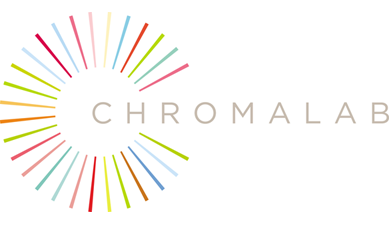Here's a peek at how we designed and made our custom stenciled wallcovering for This Old House's Bedford project.
The interior designers at Terrat Elms kindly asked us to design a modern wall pattern for a newly constructed powder room that also acknowledged the history and aesthetic of the attached 1720s house. Wall stenciling was one of the earliest and most financially accessible
forms of decorative painting in New England during the Colonial period, so I looked into designs that were in use at the time of the house's construction. I found a lot of floral medallion motifs like these:
(Sadly, the internet is fairly bereft of early original stencil patterns
in situ, but if you're interested in seeing more images, I suggest checking out American Wall Stenciling, 1790-1840.) Typically, the repeating floral medallions were laid out in rows and were surrounded by a lot of negative space and often a stenciled border. To make our design feel more like modern paper, we tightened up the overall layout of the shapes, introduced an interlocking circular motif, and simplified the flower:
After our design was approved by the designers and the homeowners, Joe and Becky, we cut three stencils by hand out of Mylar: a concave diamond shape, a flower, and a small circle. The design is applied to large sheets of solid canvas which are later cut to size to fit the room.
At this point you're probably wondering why we would apply this pattern
to canvas rather than directly to the wall, right? The reasons are both
historical and aesthetic. Because plaster walls were prone to cracks and
easily damaged, canvas was often used to stabilize a wall's surface.
Decorative painters of the era stenciled directly over the canvas, and modern
decorative painters like us still use the technique because the wallcoverings
provide a texture, warmth, and durability that you can't get from mass-produced wallpaper.
Before we were able to start the design, we had to apply a primer to both sides of the canvas to stabilize it and prepare the surface for color (the Prussian blue and wheat yellow, by the way, were selected by the designers because they're historically accurate for the period). The background color is rolled on like you'd paint any wall:
Tony used a ruler to create a carefully measured grid all over the canvas. Using the registration marks from the grid, he lined up the diamond stencil and applied the first layer of the shape with a small roller brush:
The diamond shape is repeated several times until it forms an interlocking design, and then we added a final layer of diamonds inside the negative space:
We then stenciled in the blue flower shape onto each diamond, followed by a circle. As a finishing touch, the small brown dots between the diamonds are Tony's fingerprints. We repeated this process onto four sheets of 5' x 7' canvas, then prepared a sample canvas so Tony could demonstrate the stencil technique on various layers for the show's cameras (see the bottom right section of the photo below):
Tomorrow I'll be posting Part 2, which will show you what went on during the installation and filming for This Old House.













No comments:
Post a Comment